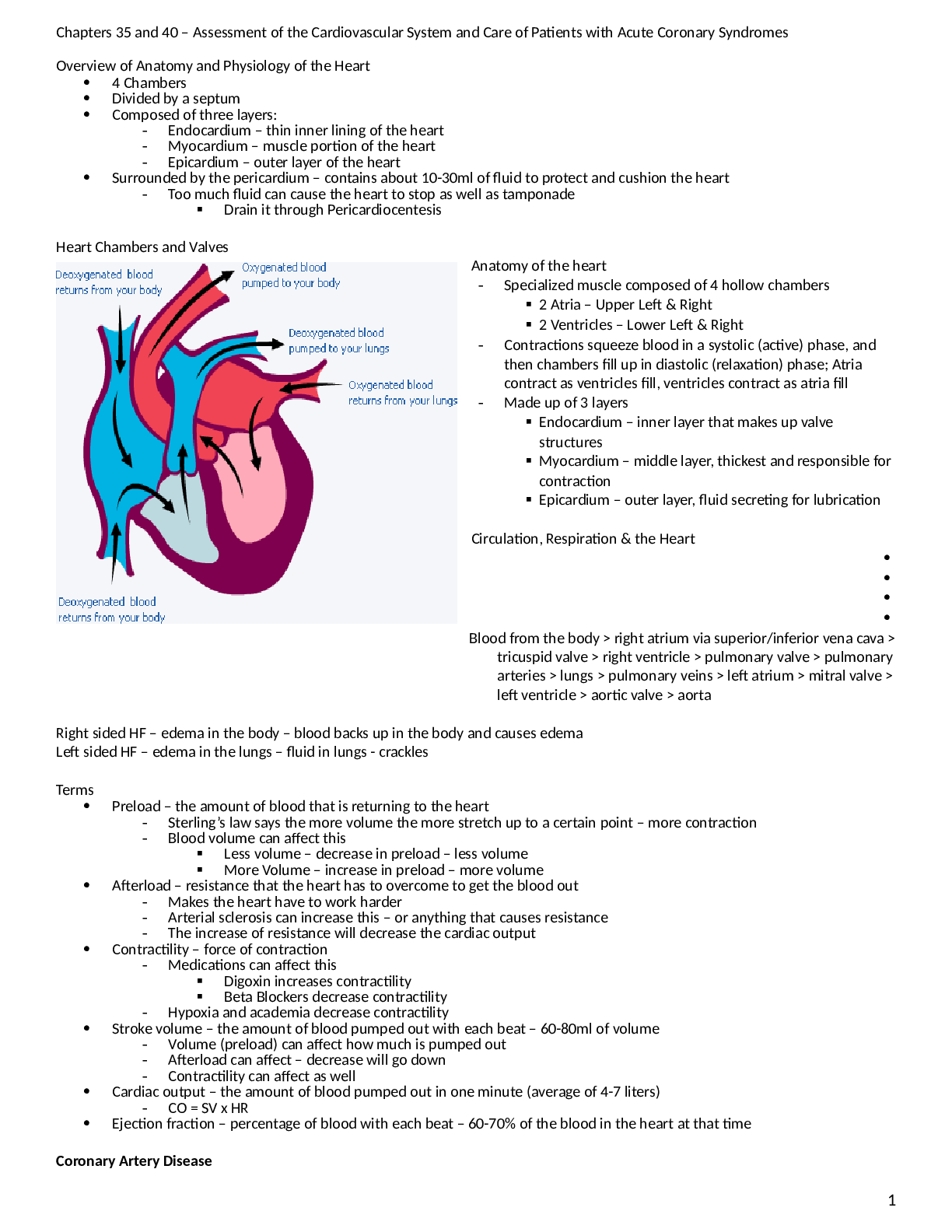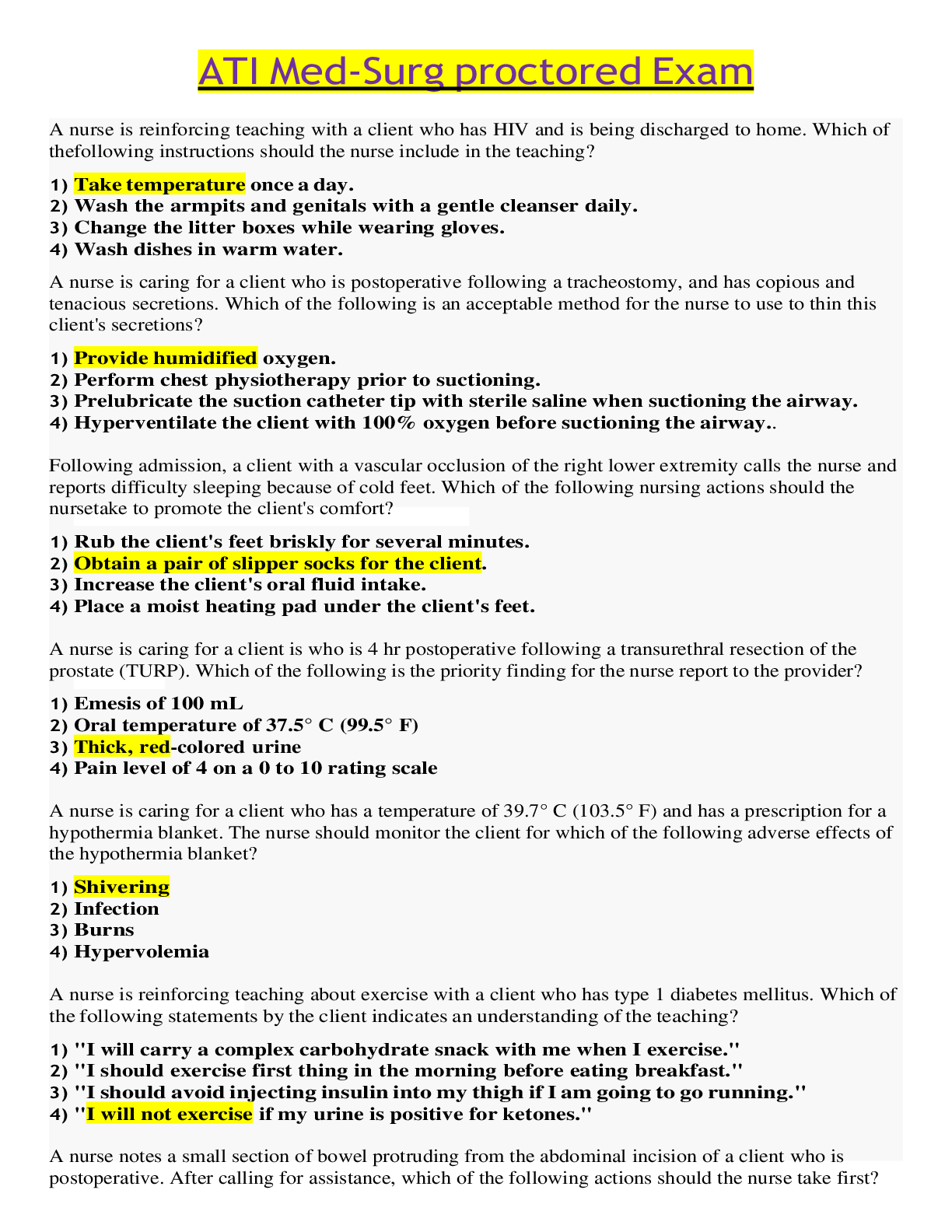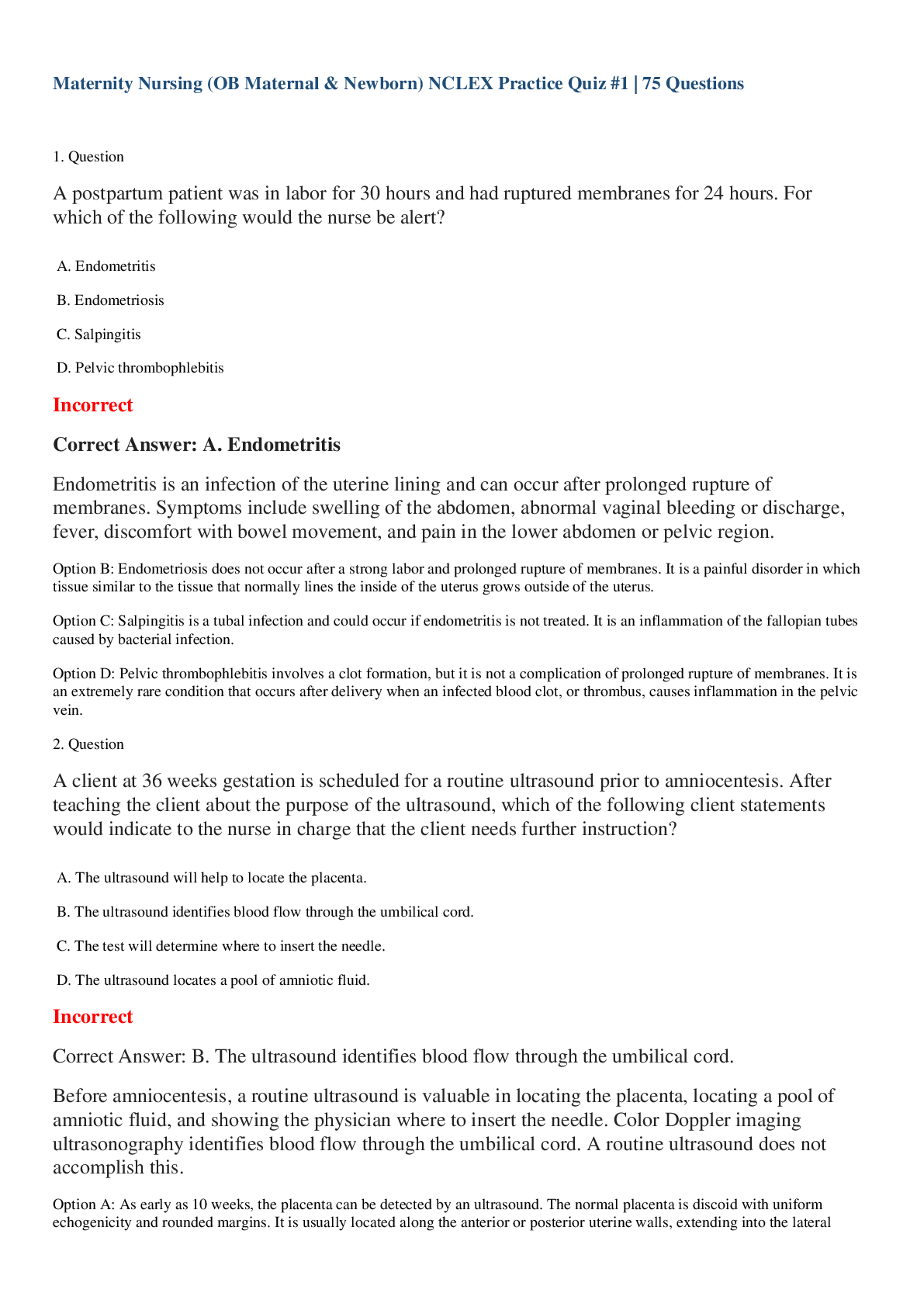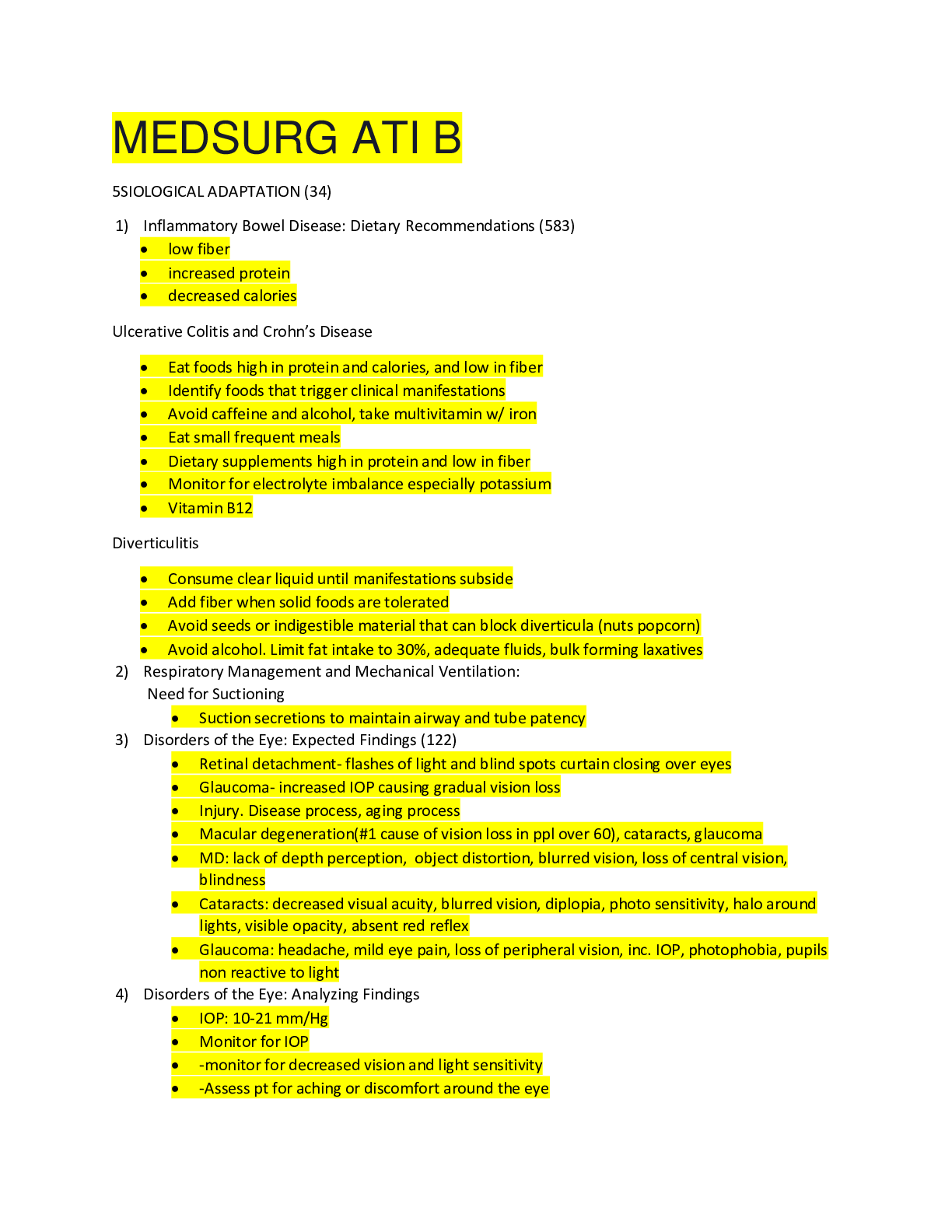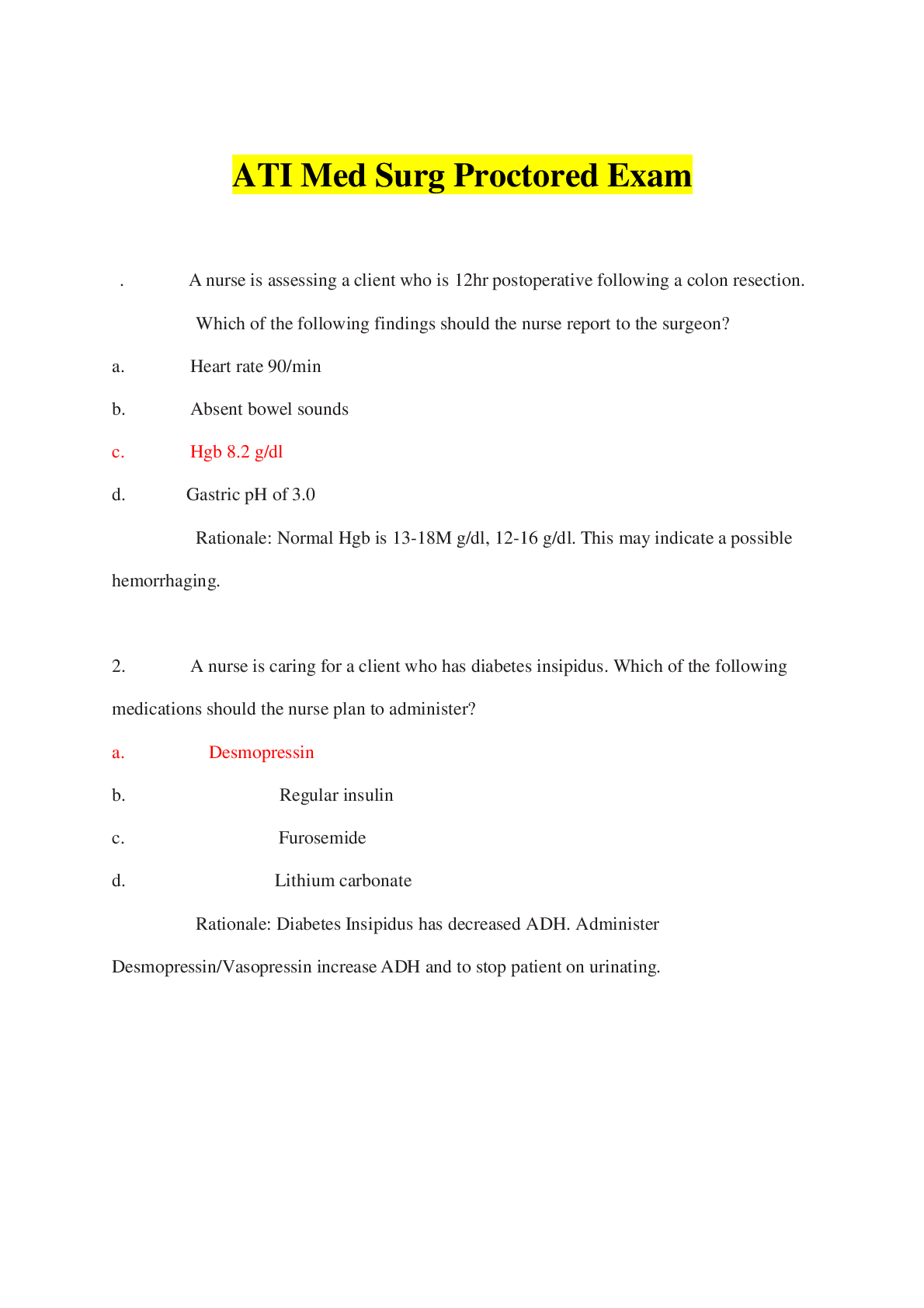*NURSING > ATI MEDICAL SURGICAL > ATI MED SURG PROCTORED EXAM-STUDY GUIDE (All)
ATI MED SURG PROCTORED EXAM-STUDY GUIDE
Document Content and Description Below
1.The nurse is reviewing a client's history which reveals that the client has had an oversecretion of growth hormone (GH) that occurred before puberty. The nurse interprets this as which of the follow... ing? A)Gigantism B)Dwarfism C)Acromegaly D)Simmonds' disease Ans: A Feedback: When oversecretion of GH occurs before puberty, gigantism results. Dwarfism occurs when secretion of GH is insufficient during childhood. Oversecretion of GH during adulthood results in acromegaly. An absence of pituitary hormonal activity causes Simmonds' disease. 2.Which of the following precautions would be most appropriate when caring for a client being treated with radioactive iodine (RAI) for a thyroid tumor? A)Administer prescribed corticosteroids carefully. B)Handle body fluids carefully. C)Monitor the respiratory status. D)Administer the prescribed medications at the same time each day. Ans: B Feedback: The nurse handles body fluids carefully to prevent spread of contamination. Corticosteroids are not prescribed for thyroid tumor. Monitoring the respiratory status and administering prescribed medicines at the same time each day are unrelated to the care of a client receiving RAI. 3.Which group of clients should not receive potassium iodide? A)Those who are allergic to corticosteroids B)Those who are pregnant C)Those taking medications such as cough medicines D)Those who are allergic to seafood Ans: D Feedback: Potassium iodide should not be administered to anyone who is allergic to seafood, which is also high in iodine. Clients who take corticosteroids or cough medicines and those who are pregnant would be appropriate candidates for potassium iodide therapy. 4.A client with Addison's disease has a blood glucose level above 80 mg/dL 30 minutes after receiving 15 g of carbohydrates for symptoms of hypoglycemia. Which of the following would the nurse do now? A)Inform the physician immediately. B)Give the client milk and graham crackers. C)Instruct the client to remain in bed. D)Check the client's blood glucose level before each meal. Ans: B Feedback: Milk and graham crackers contain forms of carbohydrates that take longer to absorb and tend to maintain the blood glucose level for an extended period. The physician should be informed if the client continues to be symptomatic and the blood glucose level is below 80 mg/dL. Maintaining bed rest protects the client from injuries from a fall but does not address the blood glucose issue. Assessing the client's blood glucose level provides a numeric assessment of the blood glucose level and would be performed in an ongoing fashion. [Show More]
Last updated: 2 years ago
Preview 1 out of 12 pages

Buy this document to get the full access instantly
Instant Download Access after purchase
Buy NowInstant download
We Accept:

Reviews( 0 )
$11.00
Can't find what you want? Try our AI powered Search
Document information
Connected school, study & course
About the document
Uploaded On
Mar 13, 2022
Number of pages
12
Written in
Additional information
This document has been written for:
Uploaded
Mar 13, 2022
Downloads
0
Views
156


